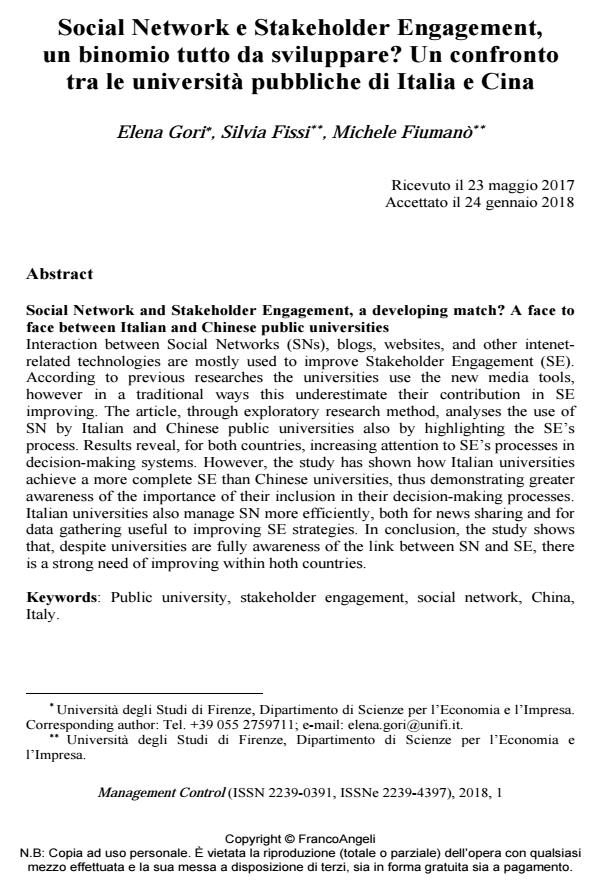Social Network e Stakeholder Engagement, un binomio tutto da sviluppare? Un confronto tra le università pubbliche di Italia e Cina
Titolo Rivista MANAGEMENT CONTROL
Autori/Curatori Elena Gori, Silvia Fissi, Michele Fiumanò
Anno di pubblicazione 2018 Fascicolo 2018/1
Lingua Italiano Numero pagine 22 P. 95-116 Dimensione file 241 KB
DOI 10.3280/MACO2018-001005
Il DOI è il codice a barre della proprietà intellettuale: per saperne di più
clicca qui
Qui sotto puoi vedere in anteprima la prima pagina di questo articolo.
Se questo articolo ti interessa, lo puoi acquistare (e scaricare in formato pdf) seguendo le facili indicazioni per acquistare il download credit. Acquista Download Credits per scaricare questo Articolo in formato PDF

FrancoAngeli è membro della Publishers International Linking Association, Inc (PILA)associazione indipendente e non profit per facilitare (attraverso i servizi tecnologici implementati da CrossRef.org) l’accesso degli studiosi ai contenuti digitali nelle pubblicazioni professionali e scientifiche
Interaction between Social Networks (SNs), blogs, websites, and other intenet-related technologies are mostly used to improve Stakeholder Engagement (SE). According to previous researches the universities use the new media tools, however in a traditional ways this underestimate their contribution in SE improving. The article, through exploratory research method, analyses the use of SN by Italian and Chinese public universities also by highlighting the SE’s process. Results reveal, for both countries, increasing attention to SE’s processes in decision-making systems. However, the study has shown how Italian universities achieve a more complete SE than Chinese universities, thus demonstrating greater awareness of the importance of their inclusion in their decision-making processes. Italian universities also manage SN more efficiently, both for news sharing and for data gathering useful to improving SE strategies. In conclusion, the study shows that, despite universities are fully awareness of the link between SN and SE, there is a strong need of improving within hoth countries.
Parole chiave:Public university, stakeholder engagement, social network, China, Italy.
Elena Gori, Silvia Fissi, Michele Fiumanò, Social Network e Stakeholder Engagement, un binomio tutto da sviluppare? Un confronto tra le università pubbliche di Italia e Cina in "MANAGEMENT CONTROL" 1/2018, pp 95-116, DOI: 10.3280/MACO2018-001005